This was published 4 years ago
Vitoria-Gasteiz, Spain: The surprising Basque capital overlooked by tourists
By Ben Groundwater
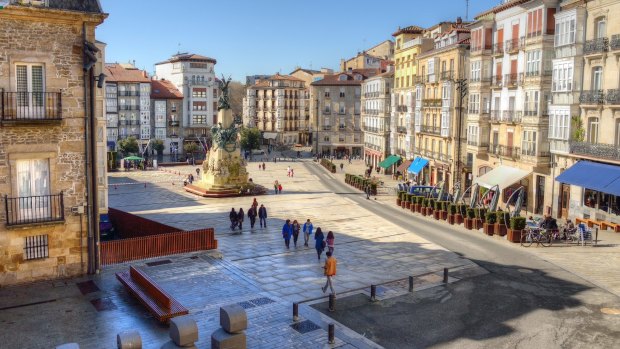
Plaza de la Virgen Blanca in Vitoria-Gasteiz, Spain.Credit: iStock
Vitoria-Gasteiz? Even Basque people are surprised when you say you're visiting. This might be the capital of their autonomous northern Spanish community, the seat of their government and therefore the most important city in their land, and yet, Vitoria-Gasteiz?
It's raining the day I arrive, but then, of course it is. That's not exactly unknown around here. The patter of falling drops on raincoats joins the ding of trams and the soft murmur of traffic as I stroll into the city's old town. It's cold today, too, obviously. The locals have nicknamed their city "Siberia-Gasteiz", such is the predictability of long winters and mercilessly short warmer months.
There don't appear to be many tourists in town today. That's partly because of the weather, but partly because Vitoria just doesn't have the appeal of some of its neighbouring Basque cities. It doesn't have the famous bull run of Pamplona. It doesn't have the beaches of San Sebastian. It doesn't have the art galleries of Bilbao.
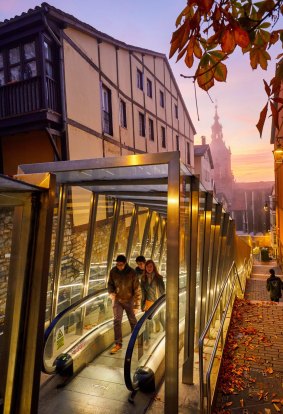
Moving walkway connecting old town with the city, with San Pedro Apostol church in background.Credit: Alamy
So what does it have? I'm hoping to find out. I'm hoping to give this place a chance, to discover what it is that draws people to live and to thrive here up in the highlands, in the cold and the snow.
My first port of call is Sagartoki, a former cider house turned restaurant, a warm, busy space where I can shed my raincoat and grab a table and consider my plan. This isn't quite the traditional venue it was in its cider-producing years: there's blue neon strip lighting behind the bar and bare bulbs hang with on-trend panache from the ceiling.
The eatery is representative of Vitoria-Gasteiz itself, I soon realise. This is a city that has history, but that anchors itself firmly in the present, with an eye on what's coming next. Those trams outside are modern and fast. The streets are clean and well cared for.
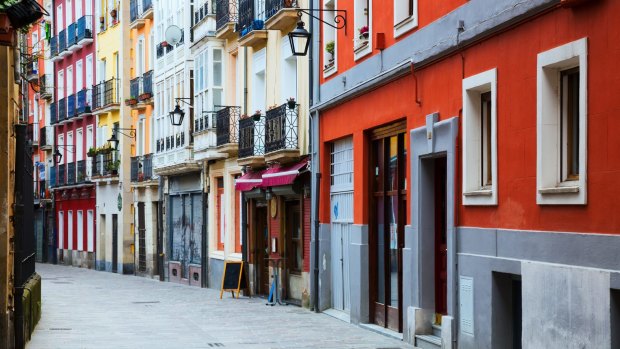
The historic side of Vitoria-Gasteiz.Credit: iStock
The appeal of this Vitoria is not food in the same way as San Sebastian, or tradition in the way of Pamplona – it's a laid-back good nature, the gentle surprise with which locals treat the sight of tourists, the fact it's so relaxed and so easy to spend time in.
It does have the typical tourist attractions, the likes of Artium, an impressive modern art gallery, plus world-class establishments such as the Archaeological Museum, with exhibits dating back to prehistoric times, the Armory, with treasures from throughout Vitoria's history, and the Museo Fournier de Naipes, with a unique and somewhat quirky collection of historic playing cards.
And those facilities are spread along wide, tree-lined boulevards, by sprawling, leafy parks, and along character-filled Old Town streets, which makes their perusal a pleasure.
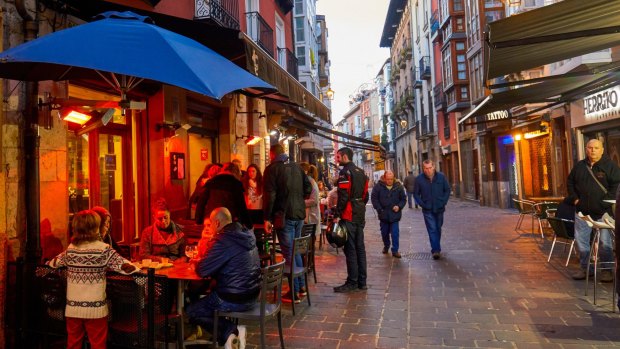
Cuchillera Street in Vitoria-Gasteiz, Basque Country, Spain.Credit: Alamy
Today, however, is not a day for museums, despite the rain. It's one of celebration in Vitoria, I discover from my fellow diners, as Alaves, the beloved local La Liga football team, prepares to take on the might of FC Barcelona. Now a plan is taking shape, to soak up the joy of the city as it prepares for the match, to join its friendly citizens in the activities that absolutely have to take place before the viewing of football: eating and drinking.
The eating is done at Sagartoki before I move on to Aiztogile Kalea, a narrow, curved street in the Old Town that is lined with bar after bar and filled with drinker after drinker. To get there I pass Virgen Blanca Plaza and then Plaza de Espana, open spaces with all the urban beauty you could ask for. I wind my way up past the gothic, 15th-century Church of San Vicente Martir. And then I'm into the crush of singing, chanting fans, a welcoming crowd who see strangers in their midst and literally embrace them.
Later, I'll go to the game, which features a few of the world's greatest footballers – and, of course, Alaves. The home team will lose, inevitably. I'll stroll the pretty streets afterwards though and enjoy the atmosphere. I'll enjoy, too, the fact it's finally stopped raining, that the cold has abated, forgotten in the warmth of the welcome.
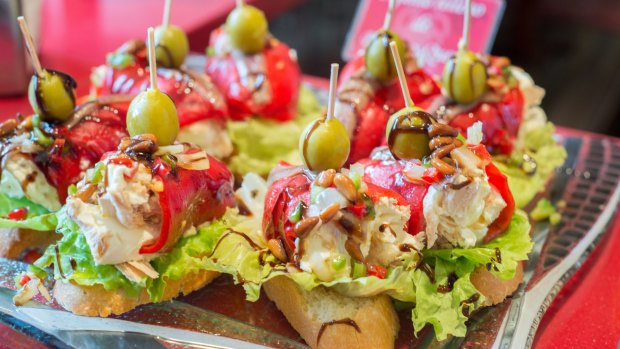
Pinchos inVitoria-Gasteiz.Credit: iStock
TRIP NOTES
The writer travelled with assistance from La Liga.
MORE
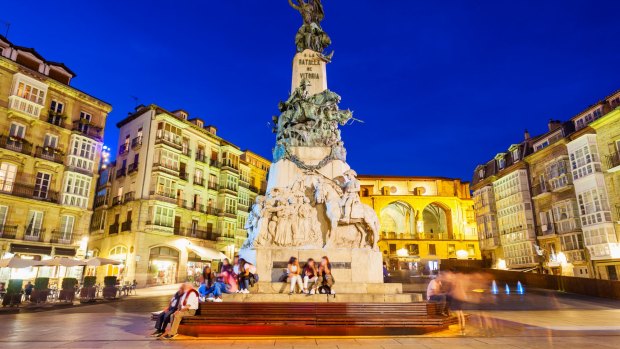
Monument to the Battle or La batalla de Vitoria at the Virgen Blanca Square in Vitoria-Gasteiz.Credit: iStock
FLY
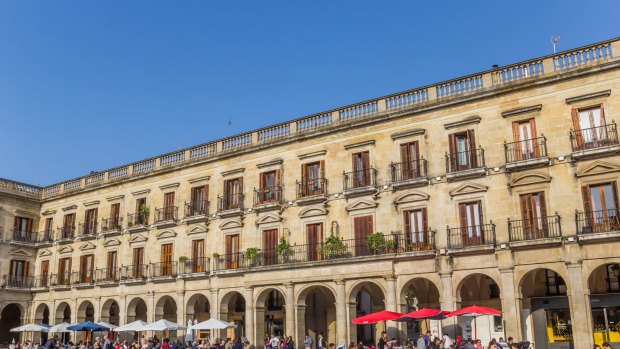
Vitoria-Gasteiz, Spain - April 23, 2018: People at the Plaza Espana square in Vitoria-Gasteiz, Spain xxVitoria-Gasteiz sundec8spain Vitoria-Gasteiz Spain ; text by Ben Groundwater; iStock *** REUSE PERMITTED *** ted.Credit: venemama
Singapore Airlines flies twice weekly from major Australian ports to Barcelona, via Singapore, with onward connections to Vitoria-Gasteiz. See singaporeair.com
STAY
The Hotel NH Canciller Ayala has spacious, centrally located rooms from $120 a night. See nh-hotels.com
Sign up for the Traveller Deals newsletter
Get exclusive travel deals delivered straight to your inbox. Sign up now.